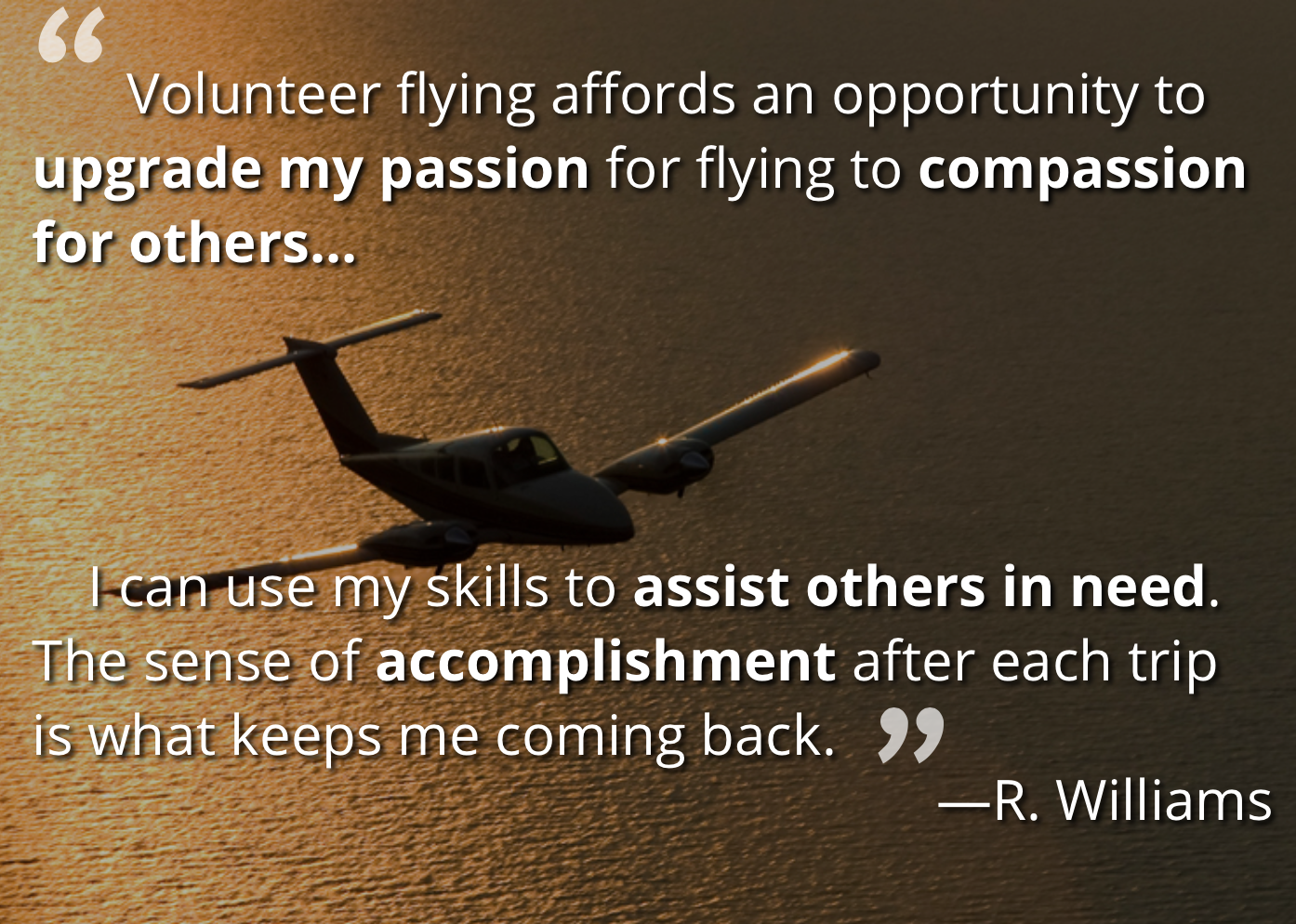Rules to Live By
Safety SPOTLIGHT: Volunteer Pilots

Tying It All Together
Your decision to become a volunteer pilot and helping others is one of the greatest ways you can use your skills and grow as a person and pilot. But it demands an extra level of commitment and professionalism. Think of the safety and redundancy techniques used by commercial flight crews to keep their passengers safe and apply this to every volunteer flight you do.
Keep These Points in Mind:
- Currency. Do you meet the organization’s suggested currency requirements?
- Duty time. Will you be able to complete the flight safely within the organization’s recommended duty time?
- Personal minimums plan. Adhere to your minimums or those of the volunteer pilot organization if they are more restrictive.
- Does weather or terrain cause any concerns? Allow a flexible window for the trip for weather delays.
- Are there concerns about runway and fuel requirements?
- Brief your passengers. Preflight, cabin, and emergency procedures briefings should be at the top of your list before takeoff.
- During the flight, ask how your passengers are feeling. Listen to how they respond to detect any discomfort.
- Have a contingency plan. Arrange ahead of time for a backup pilot and/or airplane in case you or the airplane are not up to the task of flying (inform the organization’s flight coordinator of this as soon as possible as they will typically make the arrangements).
- Postpone the flight if delays push the flight into conditions you are not comfortable with.
- Be conservative with time and fuel calculations.
- Equipment. Become thoroughly familiar with new navigation/radio equipment ahead of time.
- Hone skills regularly to stay proficient (for instance, flying into a field with short/unimproved runways or a mountain airport notorious for gusty crosswinds).
- Practice the flight on a simulator to become familiar with the route and procedures.